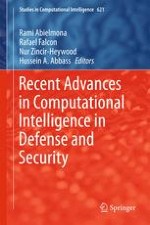2016 | OriginalPaper | Chapter
Improving Load Signal and Fatigue Life Estimation for Helicopter Components Using Computational Intelligence Techniques
Authors : Catherine Cheung, Julio J. Valdés, Jobin Puthuparampil
Published in: Recent Advances in Computational Intelligence in Defense and Security
Publisher: Springer International Publishing
Activate our intelligent search to find suitable subject content or patents.
Select sections of text to find matching patents with Artificial Intelligence. powered by
Select sections of text to find additional relevant content using AI-assisted search. powered by
